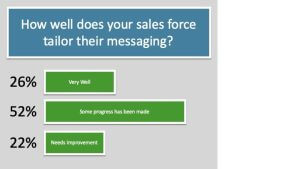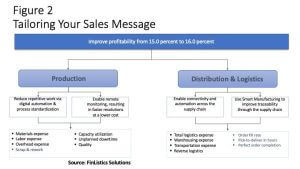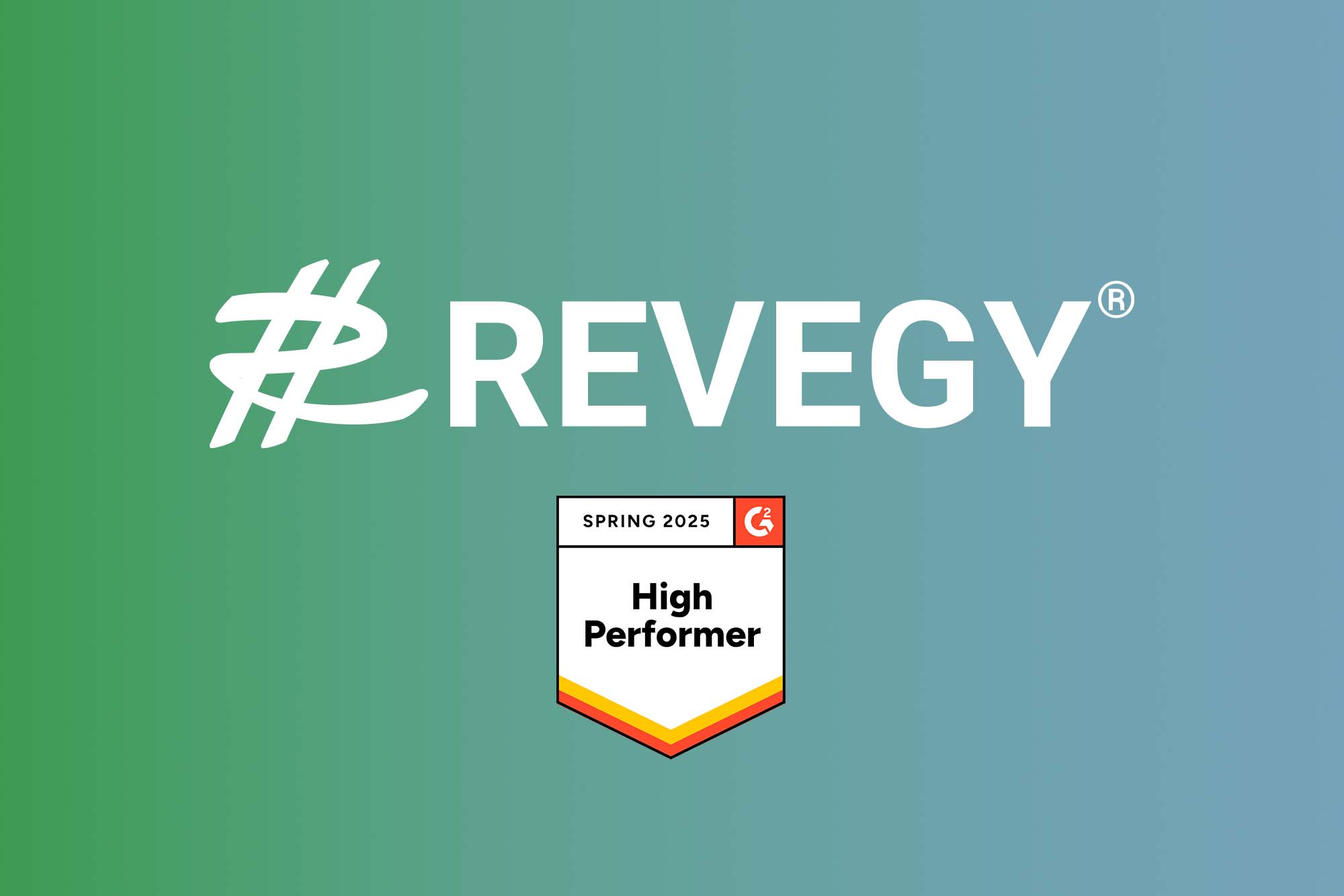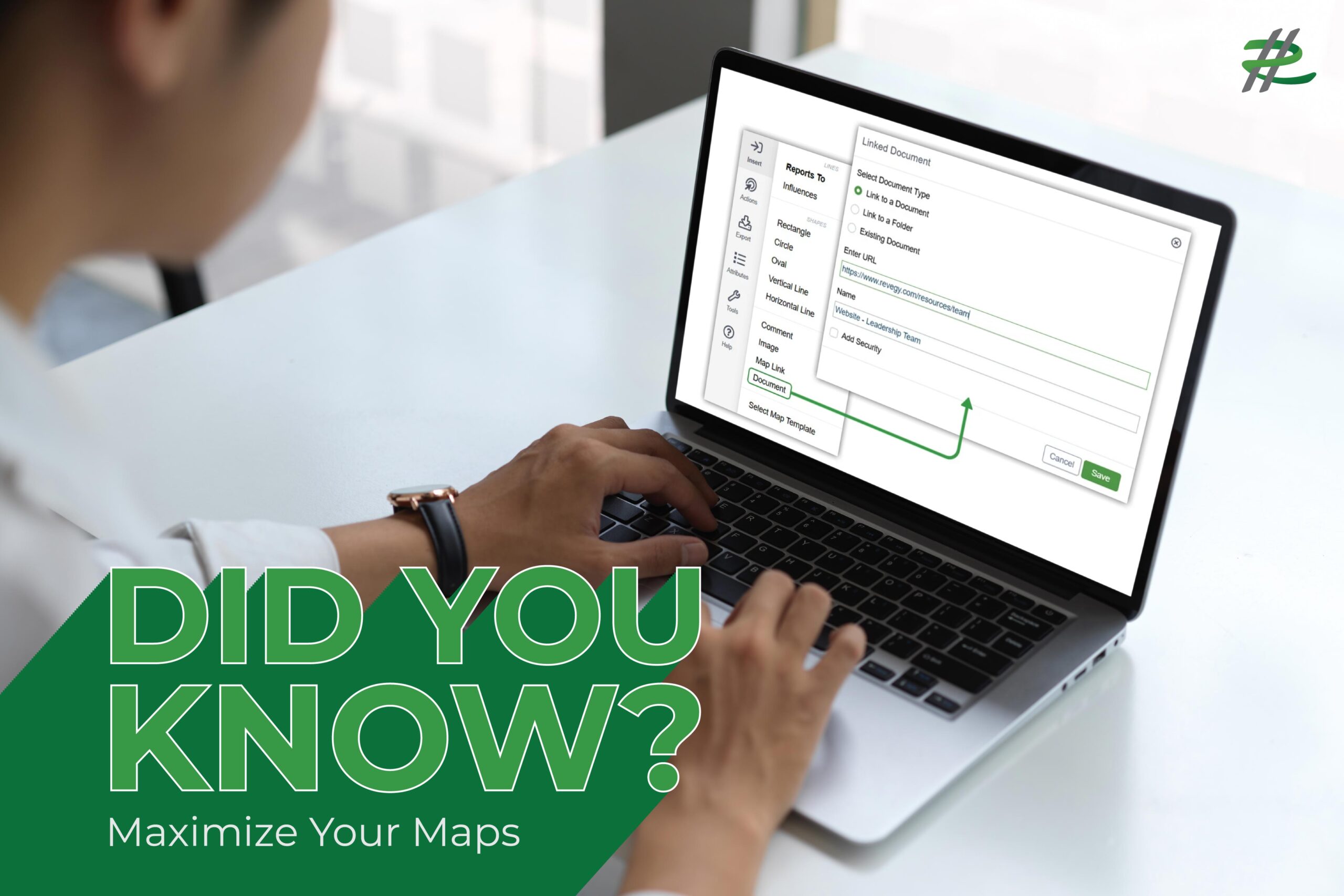The average size of a buying group has gone from 5.4 stakeholders in 2014 to 10.0 in 2018 [footnote 1], which highlights the need to tailor sales messages for each buyer persona. Yet, a recent survey by FinListics Solutions, the solution for financial analytics that power Insight-Led Selling® and Revegy, a leading technology platform for customer revenue optimization, reveals that only 26 percent of sales organizations believe they do this very well.
This blog will explore a proven framework to help you better personalize your sales messages. Thousands of sellers tout the following framework benefits:
- Comprehensive account planning
- Business-led client conversations
- Scalability across clients
Figure 2 shows the framework for tailoring your message using a manufacturing company example, although it applies to any industry. You might be thinking…this looks like a lot of work! Hang on.
Another statistic says that 77 percent of senior buyers don’t think sellers understand their business. [footnote 2] The Tailor Your Message framework will not only help you better understand your buyers’ business and tailor your message accordingly, but also build confidence and credibility.
Let’s explore each component of the framework to help tailor your message. [footnote 3]
Enterprise-wide Goal(s)
Most publicly-traded companies provide company-wide goals. In manufacturing, some of the more common goals are:
- Grow organic revenue
- Increase profit margins
- Better manage working capital
- Improve utilization of physical assets
In order to research a company’s goals, check sources like the company’s website, Annual Reports (see letter from the chairman), and Investor Presentations. Sometimes goals can be found with an online search of executive interviews, published in business articles or on social media sites.
Once you have the company’s goals, focus on those that your solutions can help the client achieve. For each goal, create a one-sentence elevator pitch. For example:
- “We help our clients grow revenues by providing greater insights into customizing offerings for individual customers.”
- “Our solutions expand profit margins by automating production processes and lowering total cost of manufacturing.”
- “Our clients better manage working capital with our solutions since they have better visibility, which lowers the investment in inventory.”
Don’t make it too complex. It’s just an elevator pitch to catch the buyer’s attention.
It is not likely that your solutions impact all the goals and that’s okay.
In Figure 2, the company-wide goal is to improve profitability from 15.0 percent to 16.0 percent.
Business Functions/Buyers Supporting the Goal(s)
The next step is to identify those Business Functions who support a goal that your solutions can help. Think about how your solutions enable them to better manage some or all the activities for which they are responsible.
Remember, in our example, the goal is to improve profitability. Assume your solutions help companies improve operational efficiencies through automation and real-time analytics, which impacts cost of goods sold. You then focus on Production; and Distribution and Logistics since they are the Business Functions that likely will benefit the most from your solutions.
Business Function (Buyers) Initiatives to Support Goal(s)
The next step is to identify Business Function buyers’ initiatives that support the company-wide goal(s). Focus on those initiatives that your solutions help to implement. Similar to researching a company’s goals, they often reveal initiatives in their Annual Report, company website and investor presentations. It’s also possible your client has shared these with you in conversations. For private companies that are less forthcoming with information, you can examine other company’s initiatives – in the same industry – to uncover specific initiatives that could apply to your client as well.
As shown in Figure 2, the following are examples of initiatives that align with your solutions, allowing you to help a company implement these initiatives:
- Production
- Reduce repetitive work via digital automation & process standardization
- Enable engineers to monitor production systems remotely, resulting in faster solutions at a lower cost
- Distribution & Logistics
- Enable connectivity and automation across the supply chain
- Use Smart Manufacturing to improve traceability through the supply chain
Measurements of Success
As the saying goes, “what can’t be measured can’t be managed”. That is why all Business Functions have key performance indicators (KPIs) that are used to measure how successfully they are managing the business. At a project level, they focus on changes in the operational KPIs that should improve with the successful implementation of their initiatives.
Some KPIs are common across Business Functions, while many are unique. Sales, for example, will focus on KPIs like meeting top-line revenue commitment, average deal size, closure rate, and pipeline. Production cares about how sales are doing since it can affect their jobs. But operationally, they are focused on KPIs such as total cost to manufacture, capacity utilization, and unplanned downtime.
Understanding the unique Business Function KPIs is critical to aligning your message to different buyers. Figure 2 shows that even though Production; and Distribution and Logistics are focused on the same company-wide goal of expanding profit margins, their KPIs for measuring success are very different. Sure, for both Business Functions, some of the KPIs focus on costs. You could make a generic statement to both such as, “I’d like to share with you ways that our solutions lower costs.” How generic and quite frankly boring! Knowing the pertinent KPIs helps you sound more relevant:
- Production: “I’d like to share with you how our solutions help lower some of the key components of total manufacturing cost like materials, labor and overhead.”
- Distribution & Logistics: “I’d like to share with you how our solutions help lower costs like warehousing and transportation.”
How to Use the Tailoring Your Message Framework
The framework is a proven tool that thousands of sales professionals apply in several ways:
- Account planning
- Create a more comprehensive and business-focused account plan that often helps identify new opportunities and buyers.
- Client dialogue
- Establish a more effective meeting strategy.
- Deliver a white boarding session to identify/confirm buyers’ areas of focus, initiatives and measures of success.
Sellers suggest that while you should prepare a draft in advance of a customer meeting to be most effective, it is best that it appears as if you are collaborating with the buyer to build the map on the fly.
Take a minute and build the framework for some of your clients and solutions. It will be time well spent. Want a fillable version? Reach out to info@finlistics.com with framework in the subject line.
Get the most up-to-date account management news by following us on LinkedIn: Revegy and FinListics.
Footnotes:
- Wixon, S. (2018, November 21). More B2B Decision Makers are Weighing In.
- Lindwall, M. (2014, September 29. Why Buyer Don’t Want to Meet with Your Salespeople?
- It is also important to tailor your message based on the buyer’s persona. To learn more, see “The 7 Personalities You Run Into When Selling to C-Suite Executives,” FinListics Solutions, February, 2019.








